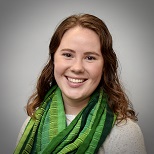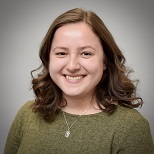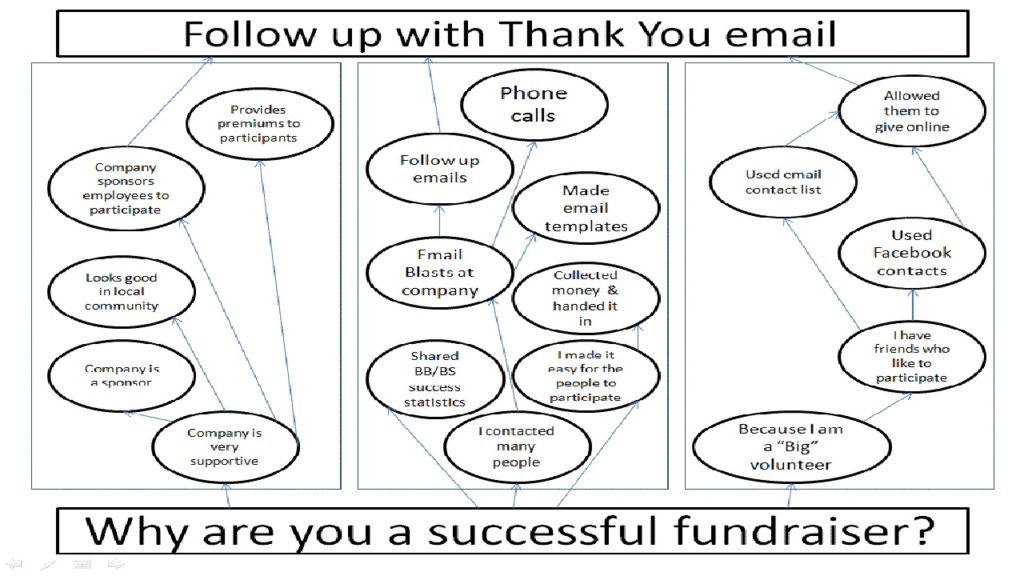
 Special to the Philanthropy Journal
Special to the Philanthropy Journal
By Sara Futch and Maria Sharova
As a land-grant university, NC State is committed to providing students hands-on, highly-engaged learning opportunities AND to providing research that is of direct, practical use to the fields we work in. Philanthropy Journal proudly presents the latest in a series of evidence-based resource articles developed by Dr. Amanda J. Stewart‘s masters level Management of Nonprofit Organizations classes. These articles represent a perfect overlap of engaged learning and practical research.
Some problems that nonprofits combat are larger than both communities and single organizations. In order to create systemic change nonprofits must work not only with each other, but also leverage the power of the communities they set out to serve. One issue inherent in our society is that of pollution and its unequal effects.
 Living in the United States, we may trust that the air we breathe is safe for ourselves and our families. However, this is not always the case. Communities of color and lower income areas are disproportionately affected by sound, air, and water pollution. In many instances these communities are located in areas near sources of pollution such as farms, factories, waste management centers or other industrial facilities [1]. Often seen as a “path of least resistance” for polluting industrial facilities and hazardous waste sites, these unwanted land uses are disproportionately situated in communities of color and low-income areas [2]. As a result, communities in surrounding areas have increased impacts on their health, including risk of cancer, respiratory problems, heart disease, hypertension, and brain damage [3].
Living in the United States, we may trust that the air we breathe is safe for ourselves and our families. However, this is not always the case. Communities of color and lower income areas are disproportionately affected by sound, air, and water pollution. In many instances these communities are located in areas near sources of pollution such as farms, factories, waste management centers or other industrial facilities [1]. Often seen as a “path of least resistance” for polluting industrial facilities and hazardous waste sites, these unwanted land uses are disproportionately situated in communities of color and low-income areas [2]. As a result, communities in surrounding areas have increased impacts on their health, including risk of cancer, respiratory problems, heart disease, hypertension, and brain damage [3].
Communities impacted by pollution have been fighting against large adversaries since the late 1970’s. This fight, dubbed the environmental justice movement, grew out of a need to mitigate environmental risk inequalities and has gained traction since then. Unfortunately, under current US law, the burden of proof for a company violating environmental law, such as exceeding pollution standards, falls on a community providing overwhelming evidence of the violation [4]. But how can communities affected by pollution fight against the titans of the petrochemical industry? One case study of a group that effectively works in this space is the Louisiana Bucket Brigade (LABB). Over the last 20 years, LABB has worked with Louisiana communities that neighbor oil refineries and chemical plants. Their ultimate goal is to hasten the transition from fossil fuels. Through this case study, LABB demonstrates that to affect systemic change in this field, nonprofits should build strategic partnerships, run advocacy campaign with clear, community-defined goals, and leverage necessary expertise while maintaining community trust.
Partnerships

Photo credit: LABB
Partnerships between smaller organizations, other communities, and external organizations require building trust. LABB begins community partnerships based on personal relationships. These are multi-year relationships throughout which the community continues to drive efforts that LABB supports.
Currently, LABB is partnered with the community organized RISE St. James to stop the expansion and addition of petrochemical projects surrounding this parish, including the infamous proposed Formosa Plant. Additionally, LABB cultivates strategic partnerships with external organizations that bring expertise to the efforts without undermining community autonomy. To fight alongside St. James Parrish, LABB partners with General Honore’s Green Army, the Center for Biological Diversity, the Center for Constitutional Rights, 350 New Orleans, and EarthJustice who bring legislative and legal experience.
Expertise
The expertise brought by these partnerships is necessary in order to effectively fight against large corporations. Corporations have access to expertise and money, which gives them more power to lobby and control messages. Providing a sufficient burden of proof of violation of environmental regulations is no small feat for a community. Community partners are able to provide information about the experience of living in polluted areas as well as using LABB’s namesake buckets to assess levels of pollutants in the air.
In addition to the laboratory, legislative, and legal partners, LABB also pulls in health researchers and urban planners as needed to make their case against the petrochemical industry as strong as possible. In all partnerships, LABB ensures the community maintains control of their data, so that this expertise is gained without sacrificing autonomy. This coalition of organizations then have needed support for an informed and effective advocacy campaign.
Advocacy
Advocacy is imperative to affecting change from the bottom up. When fighting systemic issues, organizations are fighting entrenched systems that are difficult to change. LABB, RISE St. James, and their partners are working to fight unfair pollution practices by pursuing policy changes, bringing media attention to an issue, and using community collected air quality data to hold their position in the face of corporate denial. These efforts help LABB rise against the titans of the petrochemical industry and affect change alongside vulnerable communities. In a past project, LABB worked with the Norco community to fight against the nearby Shell Oil refinery. Ultimately, this team was able to secure sufficient payouts for Norco residents to move or upgrade their homes [5].

Signs for California march Photo Credit: LABB
Organizing partnerships, effectively streamlining a message to advocate for a cause, and gaining expertise requires building trust among and between communities and their partners, and are part of what makes nonprofit groups in this space so important and helpful in affecting systemic change. Through these efforts, organizations like LABB are working to protect communities against the effects of pollution, and are challenging environmental standards on the petrochemical industry.
This mode of operation, working side-by-side with communities and retaining ownership of the project, reinforces the trust that LABB has built up within affected areas. Similarly, at the heart of all nonprofit causes are the communities and the people that a nonprofit sets out to serve. To be successful, a nonprofit must be able to not only communicate, but also understand the needs of the community from the perspective of the community members and recognize and utilize members’ skills. LABB serves as a support, not a savior. Anne Rolfes, LABB’s director describes their work as“add[ing] whatever muscle [they] can bring to their fight.” They continually put the needs of the communities they work with above personal spotlight or more stable funding models, which would be present in academic partnerships. Community driven efforts, as displayed by LABB, ensure that nonprofits of all types are better equipped to enact systemic change while empowering community partners.
References
[1] Bullard, R. D., and Lewis, J. (1996). Environmental justice and communities of color. San Francisco.
[2] Mohai, P., and Saha, R. (2015). Which came first, people or pollution? Assessing the disparate siting and post-siting demographic change hypothesis of environmental injustice. Environmental Research Letters, 10, doi:10.1088/1748-9326/10/11/115008
[3] Evans, G. W., and Kantrowitz, E. (2002). Socioeconomic status and health: The potential role of environmental risk exposure. Annual Review of Public Health, 23, 303-331.
[4] Basic Information on Enforcement. (2018, October 26). Retrieved April 3, 2019, from https://www.epa.gov/enforcement/basic-information-enforcement
[5] Smith, Shayla (2017). Black residents of Diamond win fight with Shell Chemical for relocation 1989-2002. Global Nonviolent Action Database. Retrieved April 8th from https://nvdatabase.swarthmore.edu/content/black-residents-diamond-win-fight-shell-chemical-relocation-1989-2002
“Supporting Fenceline Communities”. Retrieved April 8th from http://labucketbrigade.org/content/supporting-fenceline-communities
Sara is interested in understanding how to encourage engagement and stewardship at the crossroads of communities and nature. She believes that authentic collaborations between communities and scientists, through citizen science efforts, are an important starting point for these stewardship behaviors. She also sees that the fight for environmental justice is inextricably tied up in community engagement with environments and is proud to help shine a light on the efforts of LABB and their partners and translate this model for other organizations. Sara received bachelors degrees in Psychology and German from Wofford College and is currently working towards her MS in Fisheries, Wildlife, and Conservation Biology at North Carolina State Universities. She is also in the Public Science Cluster and after graduation hopes to work with environmental non-profits to promote authentic and beneficial community engagement with nature.
Maria is a graduate student in the Public Science Cluster at North Carolina State University. She is particularly interested in using citizen science as a way to involve communities in scientific discovery. Maria was initially intrigued by LABB’s method of collecting air quality data by using a low-cost bucket system. She is excited to have learned so much more about the influence an environmental nonprofit organization can have on large challenges. Prior to coming to NCSU, Maria worked at the Smithsonian Environmental Research Center as the Citizen Science Program Assistant. She holds a Bachelor’s degree in Anthropology from the University of Maryland, College Park. After graduation Maria hopes to continue to find opportunities to engage people in environmental research.





